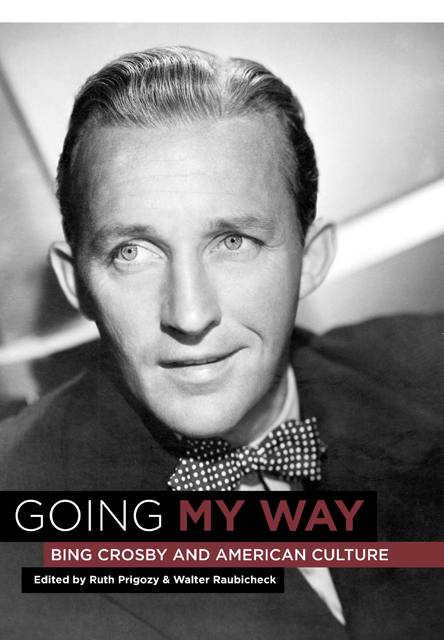Book contents
- Frontmatter
- Dedication
- Contents
- List of Illustrations
- Foreword
- Preface
- Acknowledgments
- Introduction Bing Crosby—Nothing Is What It Seems
- Part 1 Theoretical Perspectives on Crosby
- Part 2 Cultural Perspectives on Crosby
- Part 3 Historical Perspectives on Crosby
- Personal Comments
- Selected Bibliography
- List of Contributors
- Index
Preface
Published online by Cambridge University Press: 11 March 2023
- Frontmatter
- Dedication
- Contents
- List of Illustrations
- Foreword
- Preface
- Acknowledgments
- Introduction Bing Crosby—Nothing Is What It Seems
- Part 1 Theoretical Perspectives on Crosby
- Part 2 Cultural Perspectives on Crosby
- Part 3 Historical Perspectives on Crosby
- Personal Comments
- Selected Bibliography
- List of Contributors
- Index
Summary
In the summer of 2002 the American media, predictably, gave extensive coverage to the twenty-fifth anniversary of Elvis Presley's death. Journalists and pundits analyzed the remarkable influence that Presley's music and image still wields over popular culture; concurrently, the “Elvis Number Ones” CD headed straight to the top of the Billboard chart. Yet little notice was taken in October of the same anniversary of the death of the most successful and influential American entertainer of the first half of the twentieth century—Bing Crosby. Though they both died in the same year, by 1977 Crosby's music had come to seem hopelessly anachronistic to the younger generations of record buyers, and to them his image had faded into that of a kindly old man who did occasional Christmas specials with other aging crooners of a bygone era. Elvis's early, sad self-destruction and death created for him an instantaneous, immortal place, alongside the other tragic American icons Marilyn Monroe and James Dean, while his music continued to be the archetypal basis of all rock ‘n’ roll, from rockabilly to punk. Elvis impersonators have become a staple of the American entertainment scene—who has heard lately of a Crosby impersonator?
Yet the truth is, all American popular singers, including Elvis, are Crosby impersonators of one kind or another. Bing emerged as a solo act in the very early 1930s just as the microphone became available to show business, and he quickly learned to use it as an instrument that allowed him to create a new, intimate kind of singing that was both masculine and sensitive to the emotions implicit in the melodies and lyrics. Instead of “belting” like Al Jolson or Eddie Cantor, Crosby—well—he “crooned” the song, of course. Meanwhile, his up-tempo records jumped and jived as much as the best jazz recordings of the time. There had been no one like him before and his achievement inspired countless young singers to follow his musical path—including his most famous “son,” Frank Sinatra. And through Sinatra, Dean Martin, Nat King Cole, and many others, the Crosby style eventually became an ingredient in the musical mix that was rock ‘n’ roll.
- Type
- Chapter
- Information
- Going My WayBing Crosby and American Culture, pp. xv - xxiiPublisher: Boydell & BrewerPrint publication year: 2007



